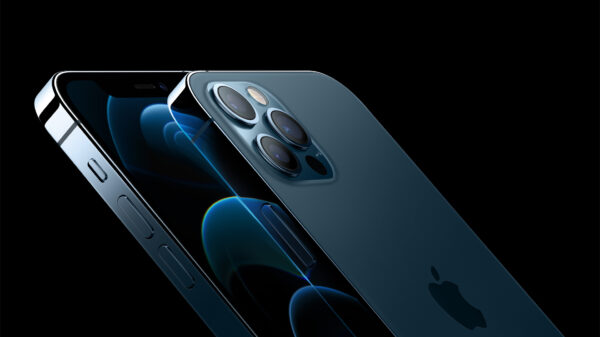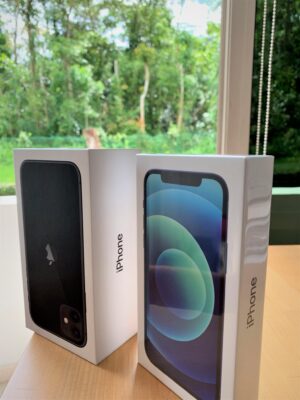
Four models of iPhone 12 will be in the hands of users next week – the iPhone 12 and iPhone 12 mini and the iPhone 12 Pro and the iPhone 12 Pro Max.
They are a little bigger and a little fancier and very tempting to new users and camera buffs because of the slew of new features such as 5G, a souped-up camera and fresh colours.
All the new iPhones ship with iOS 14 which has several significant features including home screen widgets. They give owners more creative control over their home screen experience.
All the four models has 5G capability although rival smartphone makers like Samsung and Oppo had already introduced theirs much earlier.
Apple however, is not about being the first to issue new technology. It often incorporates new technologies later than its rivals but in such a way that the iPhones have the aesthetic refinements that appeal to consumers.
This year’s new iPhones can be broadly divided into the more general category (the iPhone 12 Mini and the iPhone 12) and the premium models (iPhone 12 Pro and the iPhone 12 Pro Max).
Here are eight things you should know about the new iPhone 12.
1. Small but powerful
The iPhone 12 Mini maybe small with a 5.4-inch display but it is no budget phone. It is a 5G phone and slots right in with the iPhone 12 flagship line featuring the newest technologies.
This is the first time in seven years since the iPhone 5S, that Apple has launched a smaller form factor iPhone.
As the “smallest, thinnest and lightest 5G phone in the world”, the iPhone Mini will undoubtedly grab headlines. Users with older, smaller iPhones maybe enticed to upgrade to the Mini.
Popularity could come from more women buying the Mini as the average woman’s hand is not much bigger than the device itself.
The iPhone 12 Mini will likely be a hit as it is targeting a more diverse consumer base than geeky users who want the all the latest features packed into their large devices.
Here’s another reason why I think, the Mini will be popular: for years, iPhones have been getting progressively bigger that they can no longer can slip comfortably into the back pocket of jeans. Apple is reversing the trend here – will its rivals follow suit over the next 12 months?
2. Bigger, brighter and more powerful
Apple has ditched its LCD panels and gone OLED for the full line-up, making them brighter. The displays on all of the new models feature a new “Ceramic Shield” technology that Apple built in partnership with Corning.
Apple claims the new glass and ceramic material makes the glass four times more shatter resistant than past generations of Gorilla Glass. Hopefully, your phone “lives” longer and will be more robust.
There are improved displays and cameras (night mode on the wide and ultra-wide cameras). The size of the bezels has also been reduced, giving the models larger diagonal screens in roughly the same footprint as the iPhone 11.
3. Apple Silicon
All the four phones will run on Apple’s A14 Bionic chip. With a faster processor, its performance has improved considerably, particularly in the iPhone 12 Pro Max standing out with its super camera system.
Apple called the A15 Bionic chip “the fastest chip ever in a smartphone.” The chip is built on the 5nm process, which means it can fit more transistors – 11.8 billion of them – on the chip. That’s an increase of 40 per cent compared to the A13.
Processing power on the A14 has increased. Apple says that graphics are 50 per cent faster, while machine learning tasks are 80 per cent faster.
4. iPhone’s MagSafe is such a good feature
It is reminiscent of the MagSafe cable that shipped with MacBooks in the past. Then, the MagSafe was to protect the laptop from falling if your dog or kid accidentally tripped on the cord. The MagSafe just pulls off, the laptop remains on the desk.
On the new iPhone, the MagSafe automatically snaps into the optimal place on a wireless charger, while also allowing for snap-on accessories like magnetic cases or credit card holders.
Just insert the credit cards into the cases and you are good to go. No need to carry your wallet. I am really looking forward to this accessory.
5. No earphones or power adapters
Do you know that over 700 million pairs of wired EarPods and around 2 billion power adapters are in circulation around the world?
Mindful of the environment, Apple is shipping the iPhones without headphones or wall power adapter since you can use the old ones. But it will ship with just the USB-C to Lightning cable without the power adapter.
Environmentalists welcome this change. “The initiative by Apple to stop including headphones and chargers is a step forward to reduce unnecessary EEE (electrical and electronic equipment products) that will duplicate those that we already have,” said Teresa Domenech of University College London’s Institute for Sustainable Resources, in an article on CNBC. (see story here.)
This move will not only help reduce waste but also prevent upstream environmental impacts linked to the extraction of primary raw materials, manufacturing and distribution of products.
6. Apple’s supply chain still works
Despite the pandemic headwind, Apple has delivered on all of its key products that were announced since the beginning of the year.
This is remarkable given that supply chains have been disrupted since Covid-19 debacle around March.
Kudos to Apple for being able to make its supply chain operations work during this period, especially when production is still centered in China.






